This armchair is a symbol of interconnectedness
As both an artist and amateur lichenologist, Natasha Lavdovsky works with the natural world to explore reciprocity and humanity's role as caretakers.
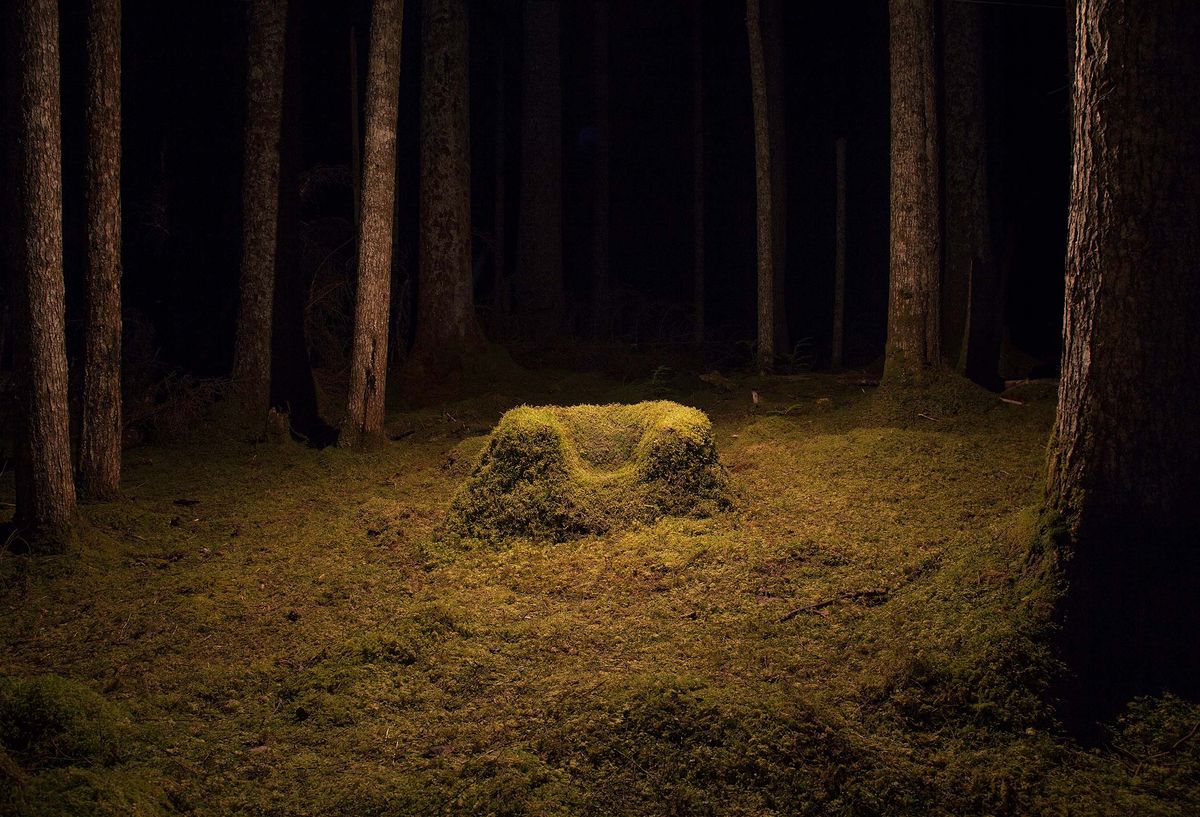

In the forests of Haida Gwaii, in a remote, boat-access-only area, sits a single chair. It’s a comfortable-looking overstuffed armchair, the type you’d find in a cozy family room.
Except for one major detail: it’s covered in moss.
Encircled by trees, the chair seems to be inviting you to have a seat, relax, in the “living room” of the woods. It’s the picture of welcoming domesticity, simultaneously part of its surroundings but apart from them – a symbol of humankind’s imprint on the natural world.
This installation, entitled “Moss Chair,” is one piece in artist Natasha Lavdovsky’s ongoing series Domestic Nature, which also includes a toilet in a lagoon and a lace curtain hung between trees. Lavdovsky is one of six winners of the Rewilding Arts Prize presented by Rewilding Magazine and the David Suzuki Foundation, and she works in a broad variety of mediums in a process guided by anti-colonial theory and environmental stewardship.
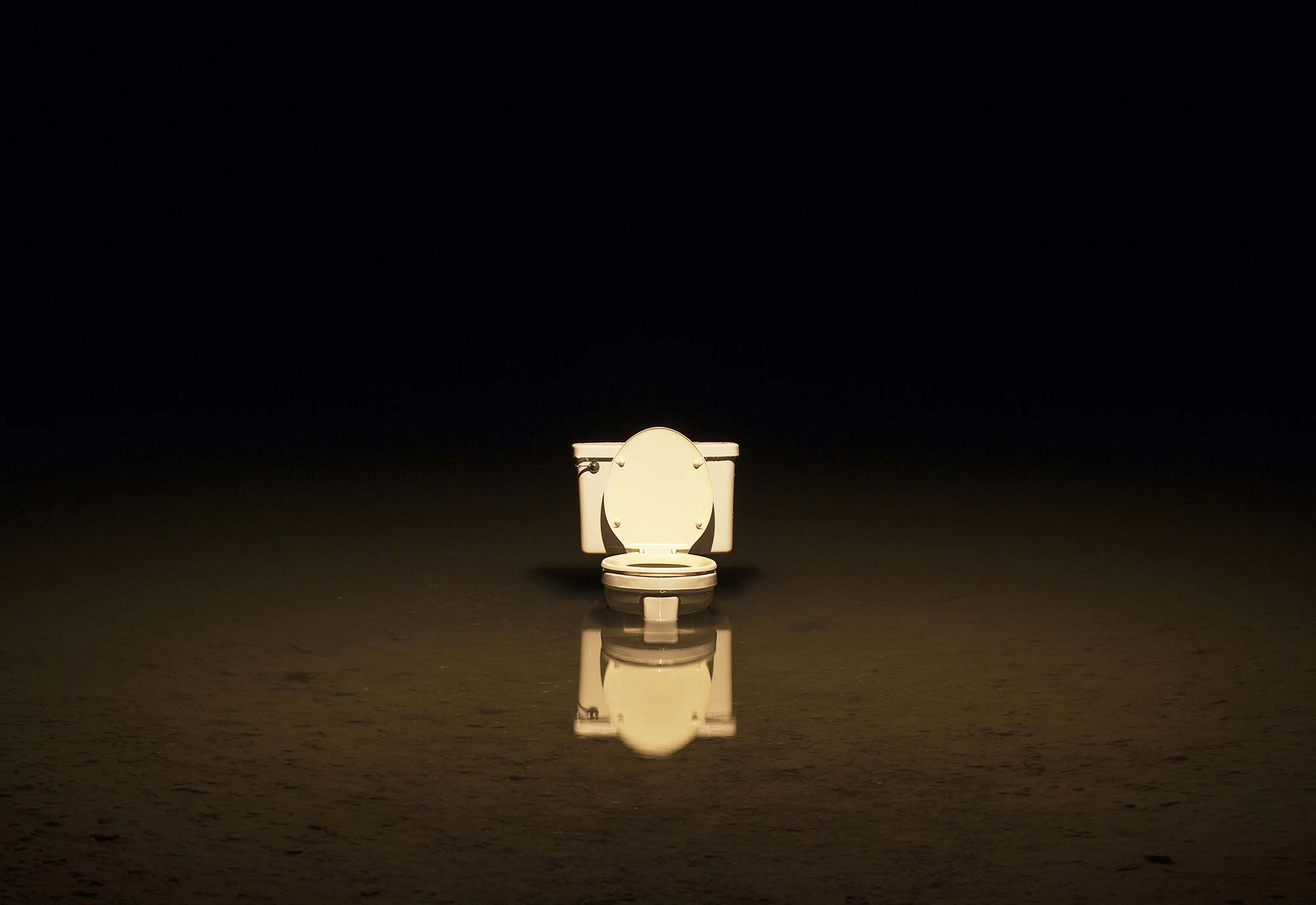
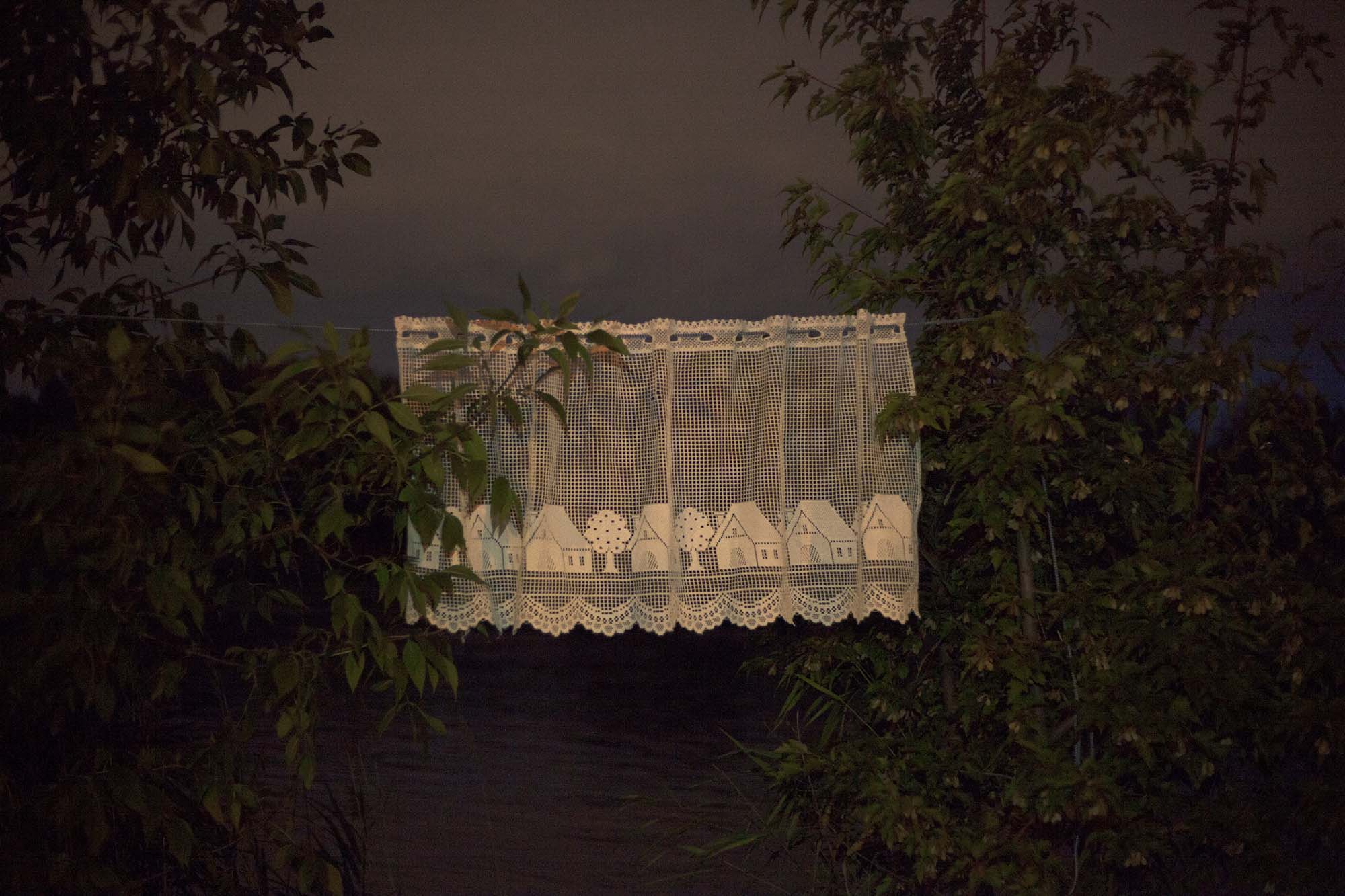
In 2013, Lavdovsky carried the frame of the chair, stripped of its foam and fabric, into the forest and rebuilt its form using dirt and moss from the surrounding environment. Within a couple of years, huckleberry plants and a baby spruce were growing out of the chair’s back. “There’s an element of welcoming you back to the comfort of connecting with the forest as an extension of your home,” she says of “Moss Chair,” which remains in its place today.
The inviting yet somewhat disconcerting presence of the manufactured chair within its forested setting reflects Lavdovsky’s ongoing exploration of what it means to respect and care for the planet while being human, and all the negative impacts that our very existence can have on the other living beings of this world. “I have felt conflicted about doing that installation,” admits Lavdovsky. “It was a colonial act. [I brought] an object of modern society into the forest specifically to call attention to that. Over the years, I was like, man, it made a powerful image. But the ethics of the action itself feel problematic.”
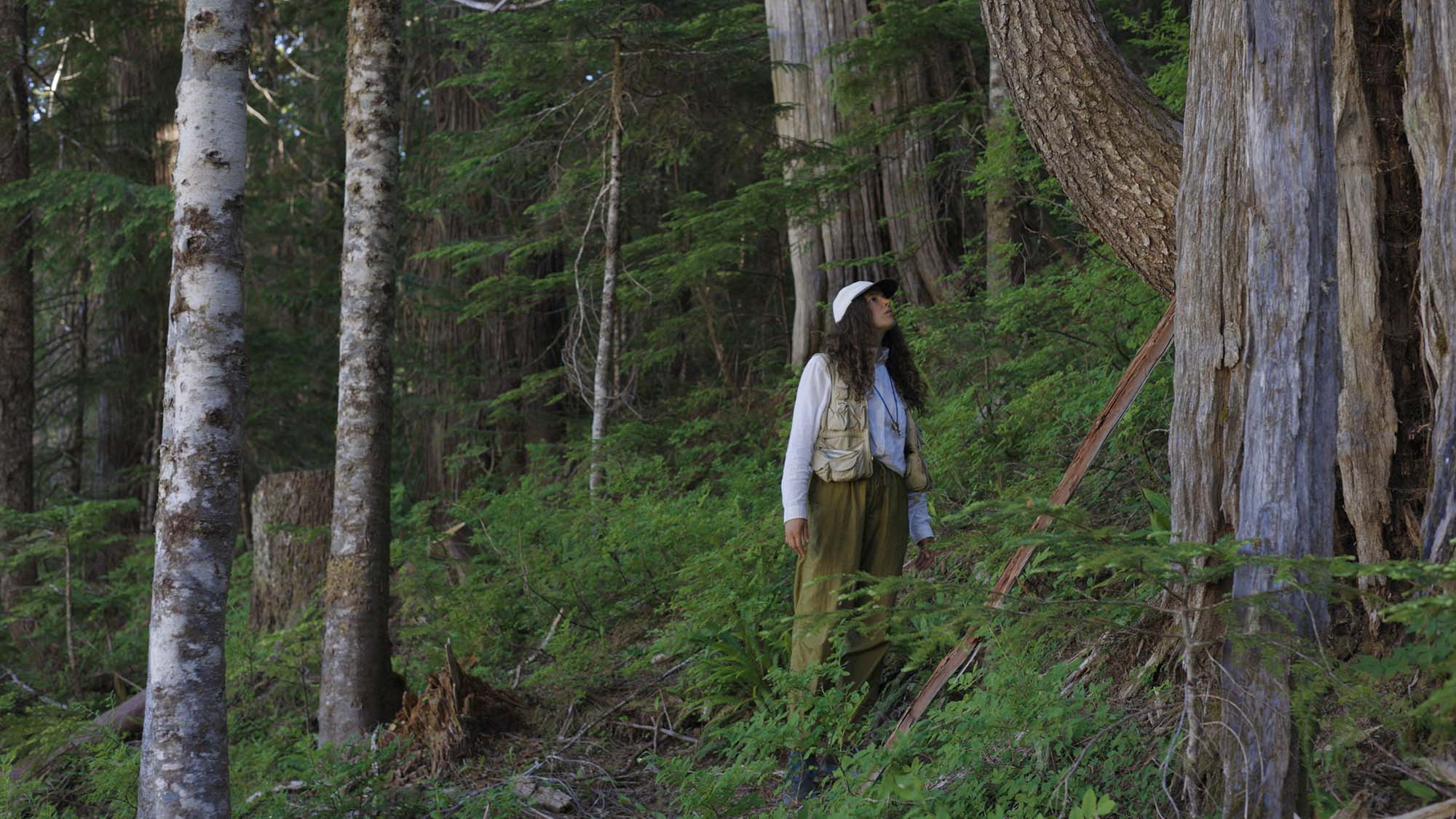
At the time of installing the work, Lavdovsky had begun to question the impact that her film photography practice was having on the planet. She had first started taking pictures of nature as an art form during field trips with her geoscience program at Princeton University in New Jersey about a decade earlier. “Photography was a way to connect my aesthetic interests with these eternal, timeless Earth processes that are so absolutely gorgeous and magical,” she says.
But having returned to B.C. in 2011, she began to wonder about the chemicals used to process her film and the very practical logistics of whether the rural community she lived in was set up to properly dispose of them. “I went through a really difficult time, where I was horrified by every step I took,” says Lavdovsky. “I know that as human beings we cause harm to other life forms. That’s part of being a human. And that's okay within the natural biosphere systems. It’s just the degree to which we now cause harm that is so disconnected from any concept of sustainable existence.” She started to think about how she could express her artistic ideas with full awareness of her level of environmental impact. “I was spending a lot of time out in the woods, and I realized how much industrial extraction had already caused so much harm to the land there,” she says. “You see oil barrels and rusty old equipment just stranded in the forest. There’s so much junk and relics of industrial exploitation. And it’s all connected to the demand on the forest by modern society.”
These questions led to the creation of “Moss Chair,” in which she embraces the difficulty of avoiding actions that negatively impact the biosphere; for this project, for instance, they included using gas for the boat to get to the site and diesel to power the lightbulb that lit the piece for her photograph, not to mention the manufacturing process of the camera used to take the photos and the very act of adding a man-made object to the environment. “I’m still causing harm,” she says. She regrets not speaking beforehand with the hereditary leadership of the Haida clan whose territory the piece sits on, though they have retroactively approved the project.
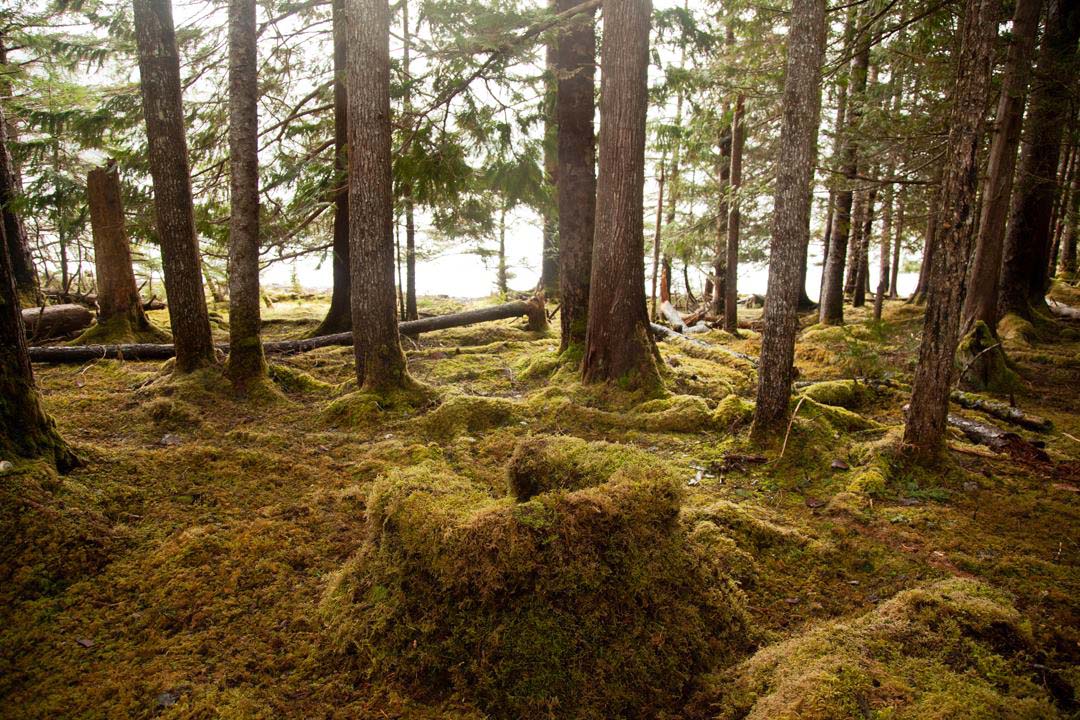
For Lavdovsky, “Moss Chair” was a turning point in her practice, and now she even finds terms like nature, wilderness and rewilding problematic. When she submitted her work for the Rewilding Arts Prize, she saw it as an opportunity to open a conversation about the concept and think about its implications. “When I see the word rewilding, it immediately brings up the connotation of the term wilderness or wild, which historically has been used to separate humans from nature,” she says. “It evokes a romanticized, almost exoticized colonial concept of an untouched landscape, which is the basis of colonial violence against Indigenous people.”
This questioning of Western civilization’s impact on the planet and Indigenous people will be familiar to anyone who cares about nature. But how do you move about in the world without being overcome by climate anxiety and paralyzed by fear of causing harm?
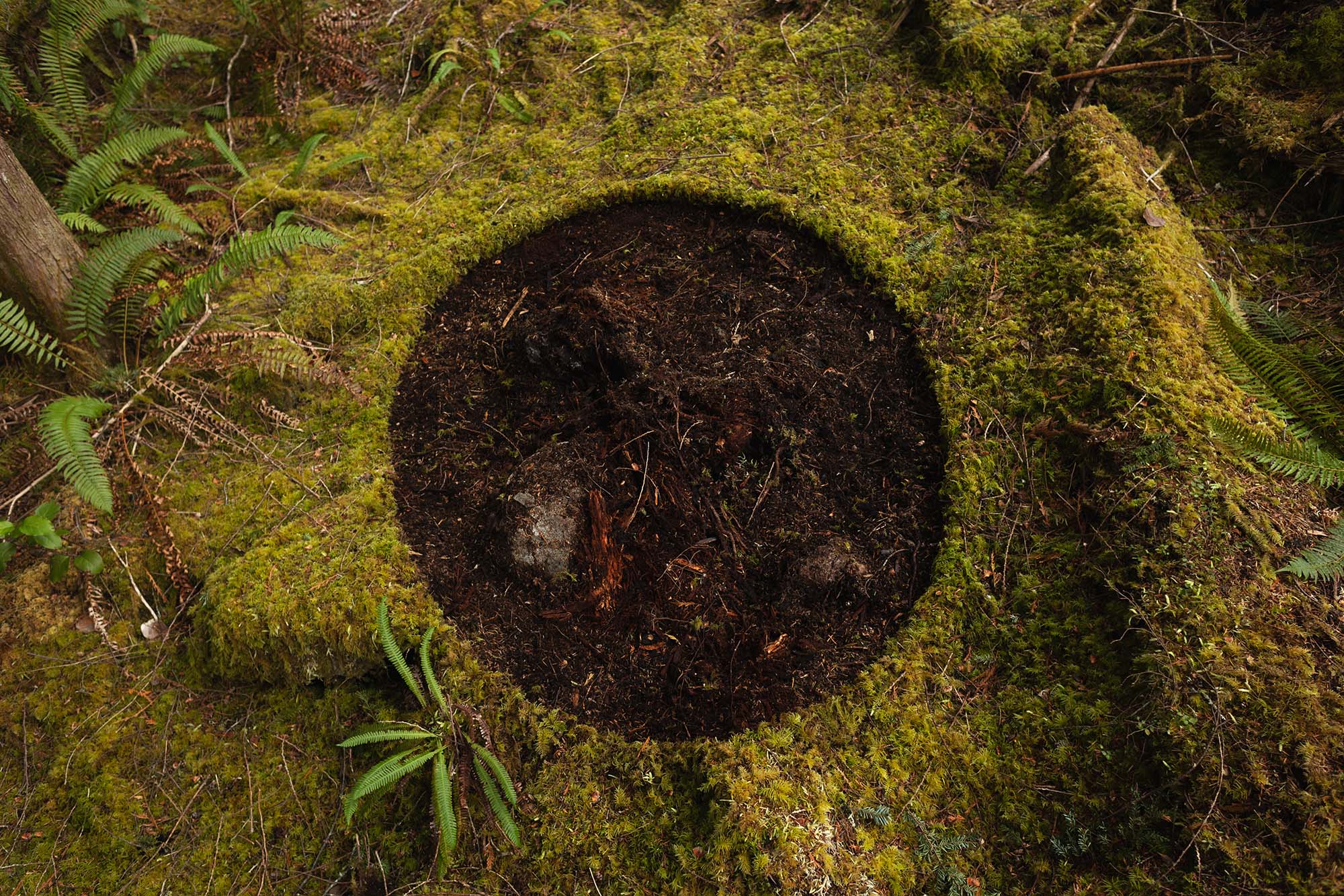
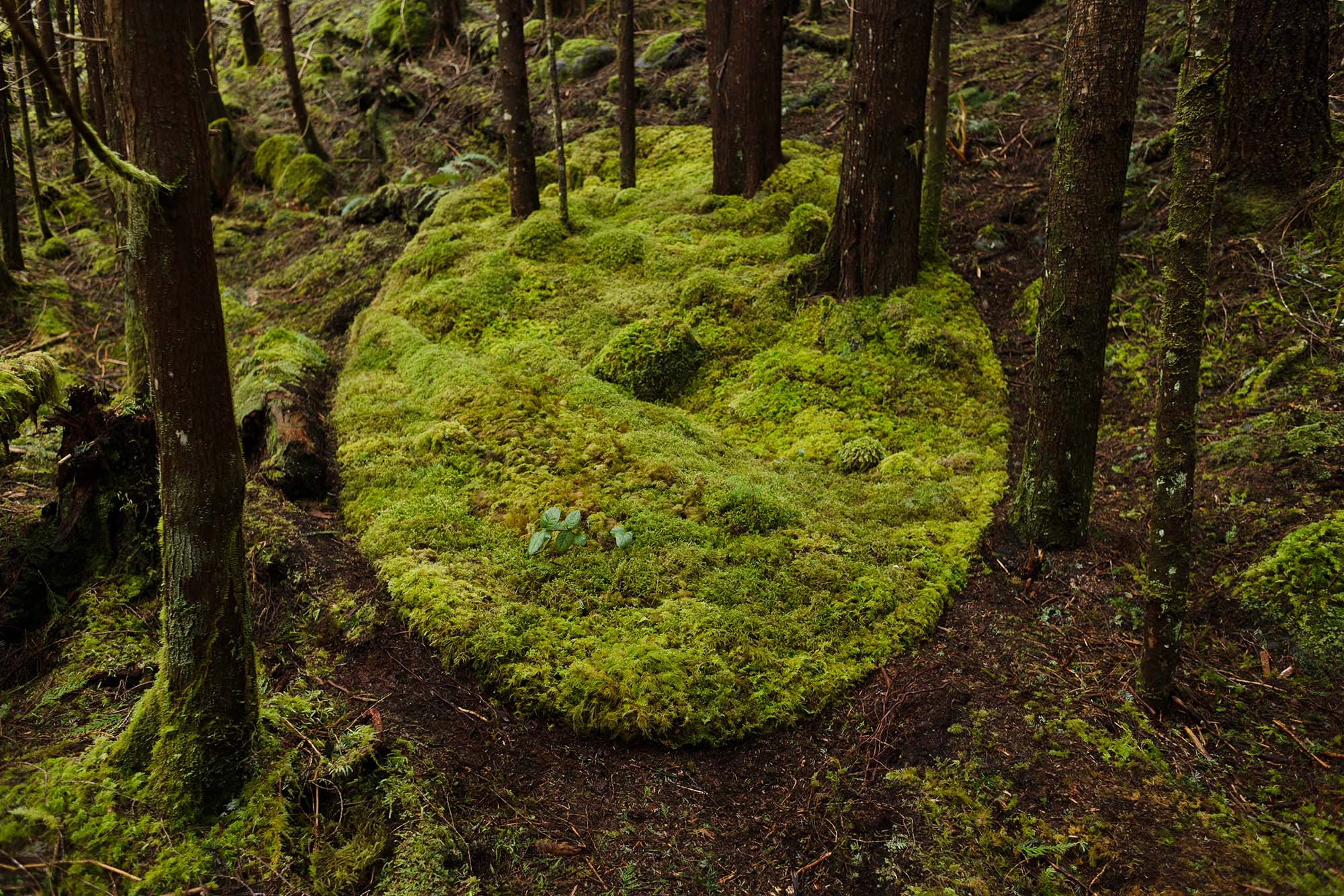
For Lavdovsky, she’s exploring these concepts as her artistic practice evolves, and these days, she’s more focused on ways to engage with the land through reciprocity and active care. For example, in 2021, in an area near Fairy Creek on Vancouver Island that was slated for clear cutting, she did a field survey to collect data on the presence of the rare oldgrowth specklebelly lichen. For another recent piece, Moss Circle, she rescued moss from a site of impending logging, transplanting a total of about 30 square metres of the shade-loving plant along with salvaged soil to a riparian reserve zone 100 feet away. “It looks like this damaging act against moss,” she says. “But actually, I’ve moved the moss into the forest to keep it living.” (She took GPS coordinates at the place where she’d peeled up the moss and returned post-clearcut to find the land unrecognizable.) It’s an inherently hopeful act: art rooted in looking forward and attempting to preserve what’s worth saving.
Perhaps it’s a model of how we can use art to move forward on climate action. “Art has the capacity to integrate multiple complex ideas in a more experiential, narrative, emotional way,” says Lavdovsky. “It can shift people’s perspective in ways that data can’t.” It’s an optimistic view of the power of creative works in the face of the climate emergency. Hope instead of fear.
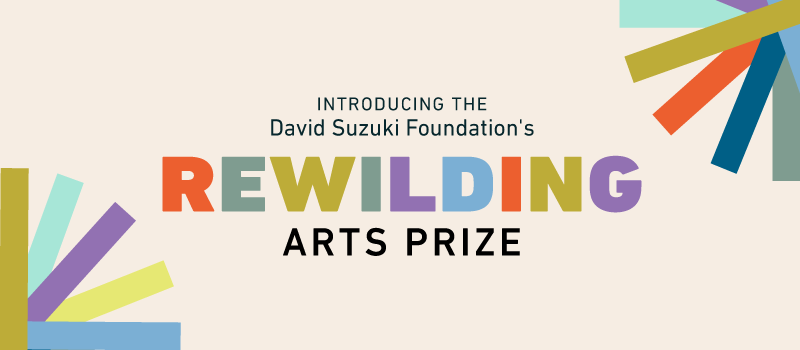
This article is part of a series on rewilding and the arts as part of the David Suzuki Foundation's inaugural Rewilding Arts Prize. Read more about the prize and the winners here:
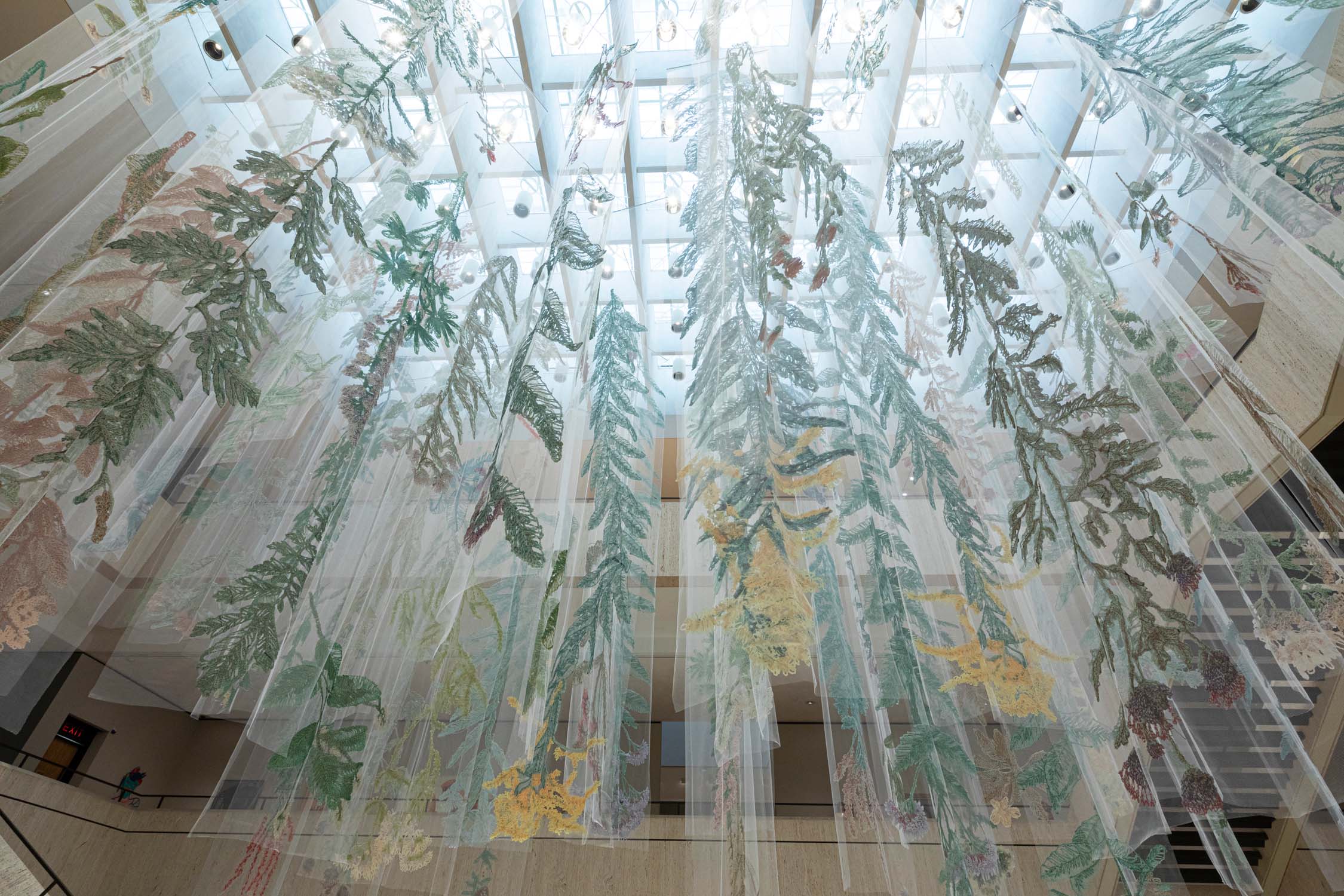



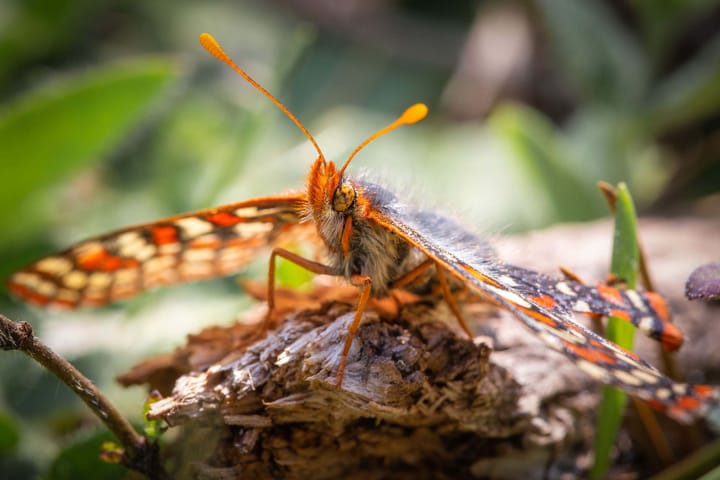
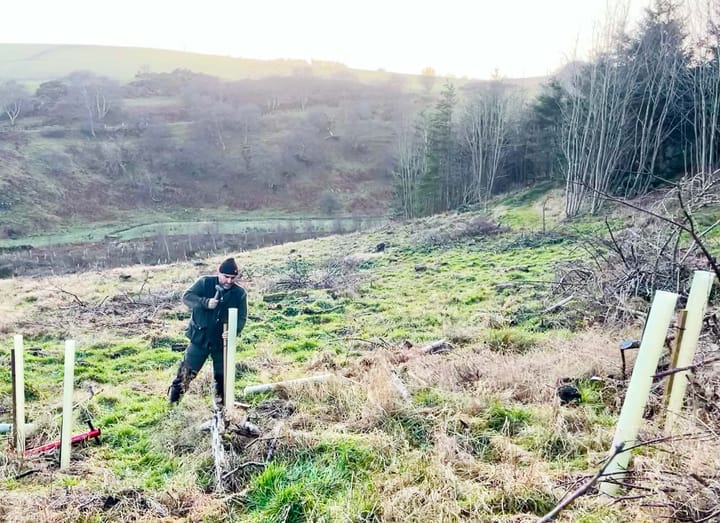
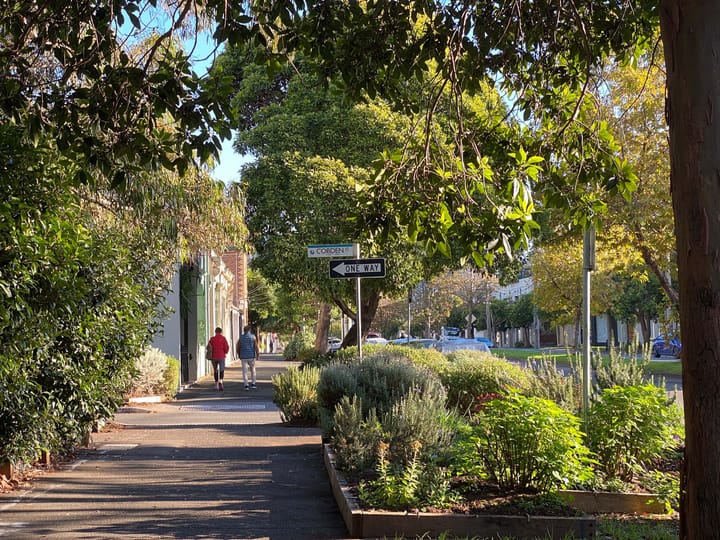

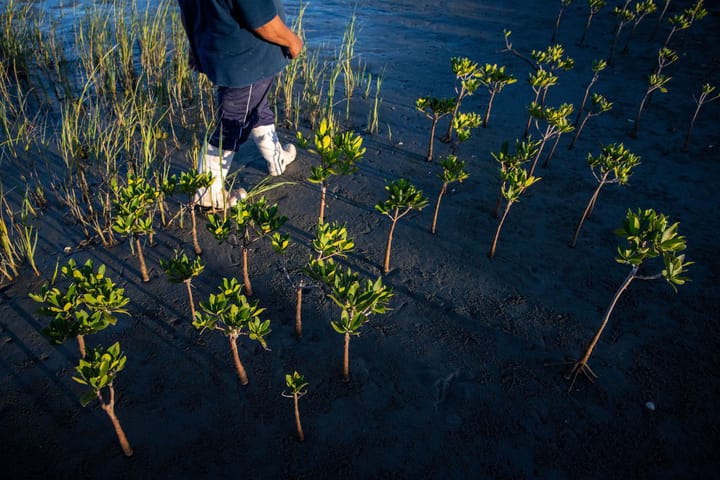
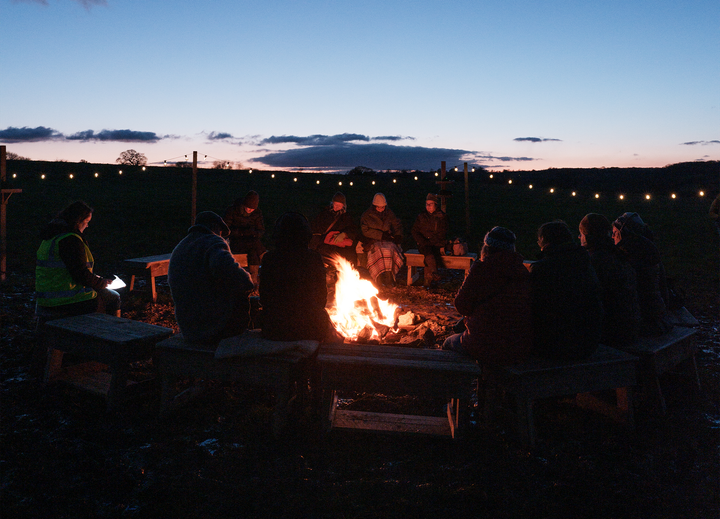

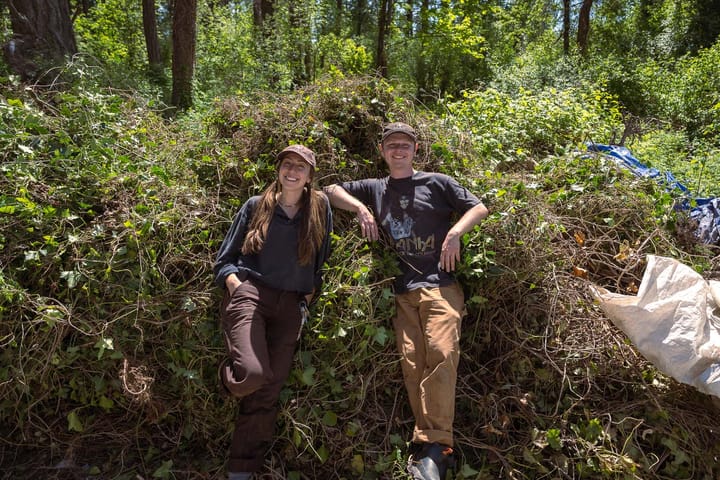
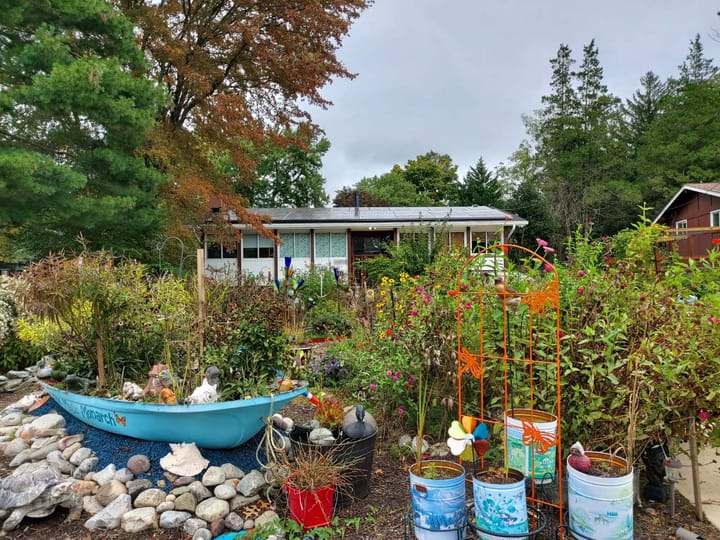
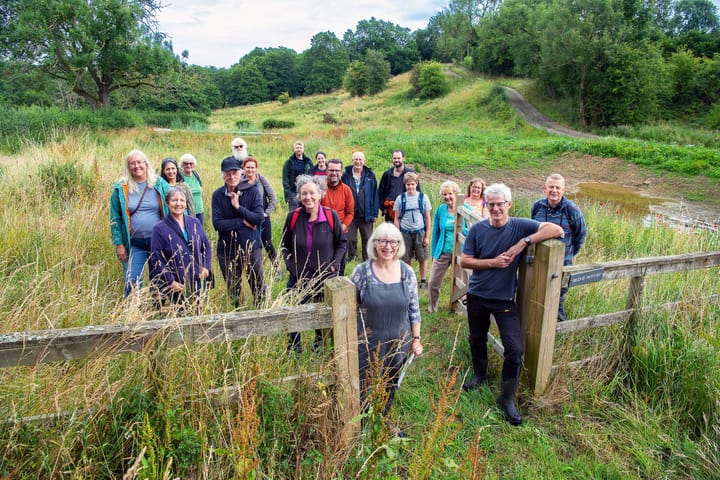
Comments ()